We would like to point to a few useful ideas, modifications and upgrades pertaining to the Sequential Pro-One. This classic synthesizer was built from 1981 to 1984 and it sold about 10,000 times. Being a very reliable instrument, the Pro-One is still in ciculation in large numbers today.

Part 1 of our trilogy is devoted to a simple idea: to a pitch bend / mod wheel socket upgrade that brings the instrument up to masterkeyboard standards …
Explanatory notes: The Pro-One synthesizer offers a small step-sequencer / arpeggiator that outputs the notes via CV / Gate – including any glide effect – if activated. The sequencer is both useful and simple to operate. Sequences are recorded in step-time and can be played back and transposed in real-time via the keyboard. In this respect, the Pro-One is a nearly perfect “instant music” synthesizer, both for internal and for external cv-control.

One little snag (there’s always one): Neither pitch-bend nor modulation wheel values can be used for external performance, which means that the usefulness of the Pro-One as a controller keyboard is somewhat limited.
An experienced technician has no big problems implementing what we’re missing here: Pitch-Bender Out and Mod-Wheel Out. Now, the real sensation is that mod wheel output refers to the sum (!) of all modulation matrix control voltages.
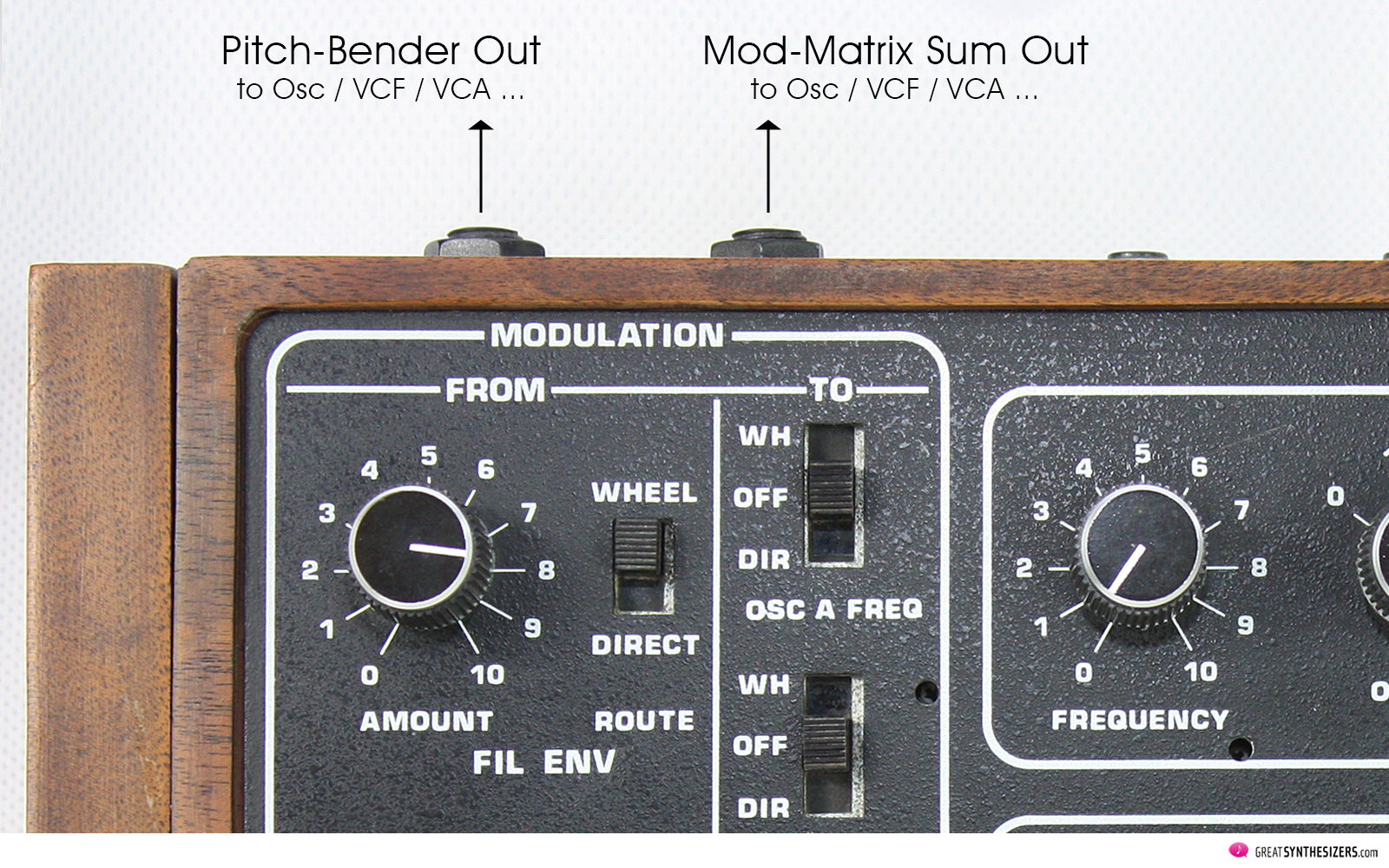
This means that not only the PITCH BENDER CV is available, but also the following control voltages: FILTER ENVELOPE, OSCILLATOR B (multiple waveforms, frequency range switchable audio / low) and the LFO (again with multiple waveforms). The voltage amount can be controlled in any case via WHEEL or DIRECT(ly).
This modification improves the Pro-One master keyboard functions significantly: The user now has a keyboard, sequencer, arpeggiator and glide at his fingertips (for controlling other analog synthesizers or modular systems), and, in addition, extra control voltages such as pitch bend / envelope / oscillator / LFO signal.
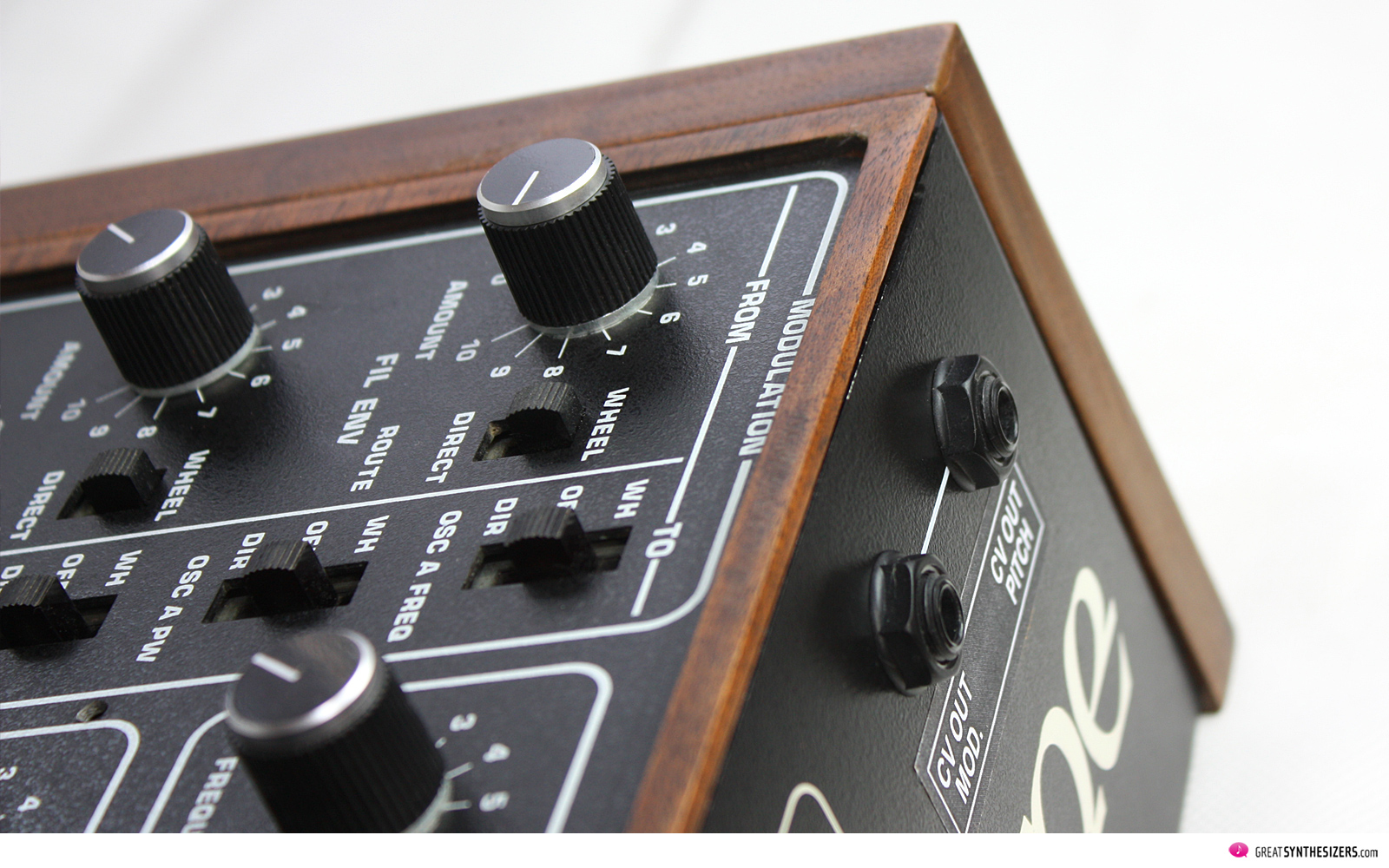
Now, the availability of these CV voltages is in itself a source of great satisfaction, but in addition, there’s the MOD-MATRIX with all its details and routing flexibility, which makes it even better. To be clear: This gives you lots of CV voltages which are useful in a great variety of ways – from well-dosed modulations to dramatic sound effects.
What about a combined Pro-One oscillator / LFO signal that modulates an ARP 2600, Roland System-100M, Doepfer A-100 module, or Roland SH or Korg Mono / Poly synthesizer (> VCF IN)? A signal that can be intuitively adjusted from 0 to 100 (no modulation / maximum effect) via the modulation wheel? All that while the sequencer runs the Pro-One and the external synthesizer in parallel?
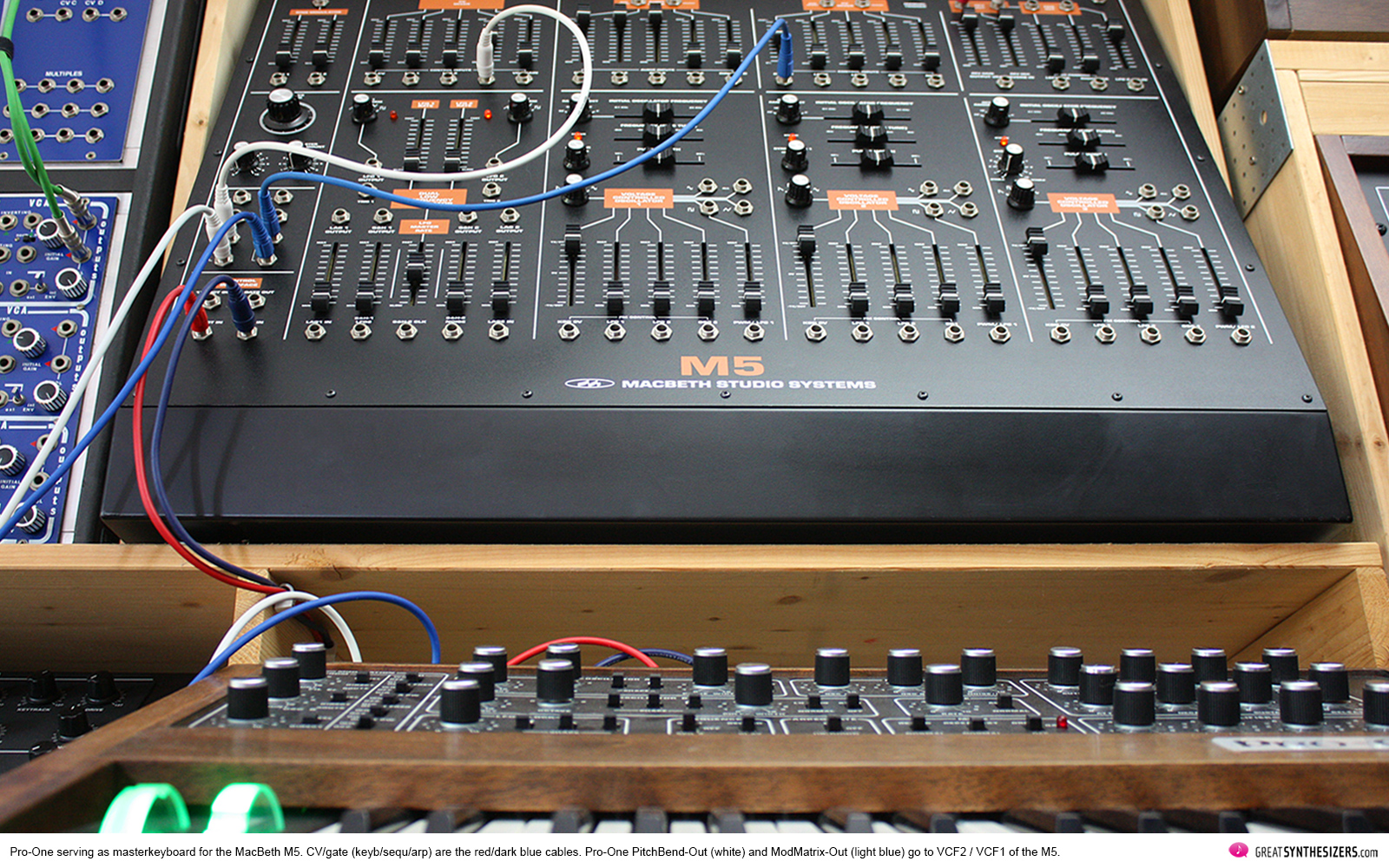
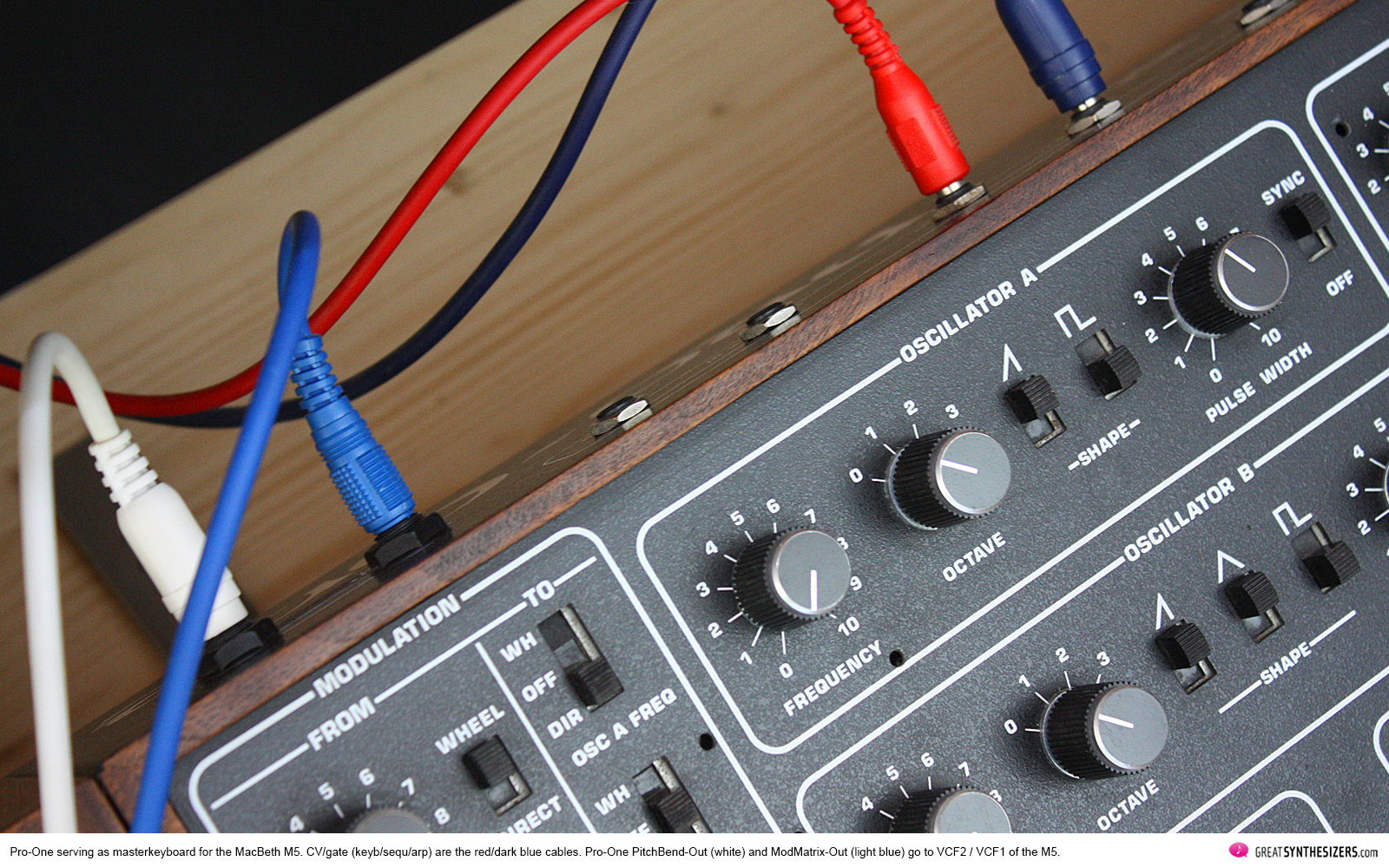
And what about a simultaneous Pitch-Bender / Mod-Wheel modulation of both MacBeth M5 filters? Or of two of its oscillators? Or of any Eurorack LFO (VC speed) or VCO (pulse width modulation)? These are just a few of the performance options available with a Pro-One that additionally features Pitch-Bend Out and Mod-Wheel Out.
We won’t delve into how to implement this modification. We did not install ours ourselves. A friend of ours – an experienced technician – implemented this mod for us. After a quick look at the Pro-One circuit diagram, he identified the two points for pitch-bend CV and ModMatrix CV, tapped them and brought them to the outside of the synth.

It’s really the idea that counts here. A Pro-One equipped with Pitch-Bender / Mod-Wheel Outputs converts into a nearly perfect analog master keyboard. A master keyboard that not only allows you to control an external synth, but also adds to the overall performance with a very individual, delicious analog sound.
By the way (and should the question arise), the wooden housing of the Pro-One shown is from Synthwood.
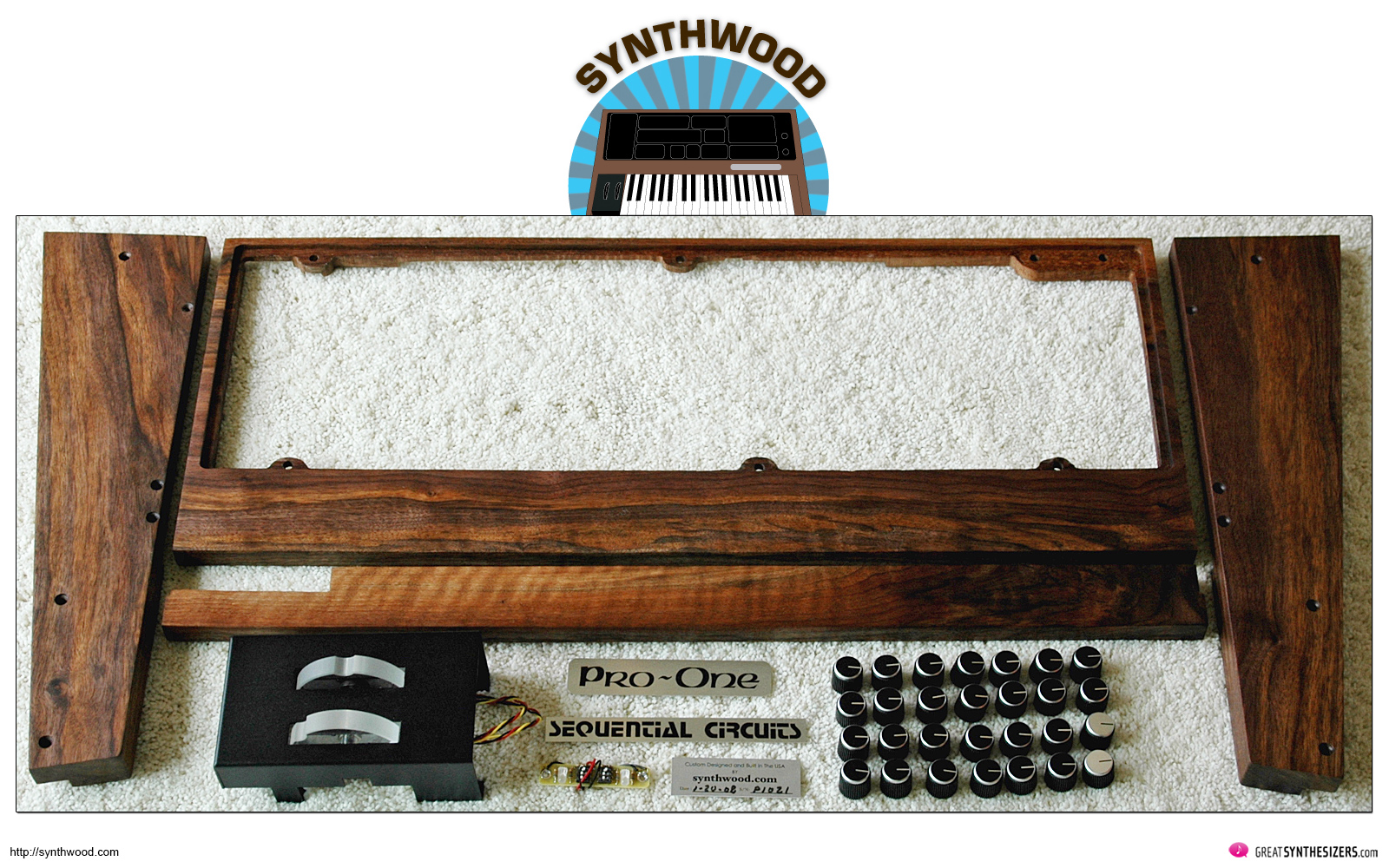
We do not know whether the company in question is still active or not, since the website dates back to 2013. But there are still contact details listed, so it is quite possible that a Custom Sequential Circuits Pro One Conversion Kit is still available on request.
Similar to the Synthwood cases are those from the English manufacturer MINT CASE. Their wooden Pro-One case is even more clearly indebted to the dimensions of the original plastic frame. The wooden chassis, currently available (spring 2021) on reverb.com, impresses with its fine wood (American Walnut), and with its optical elegance.
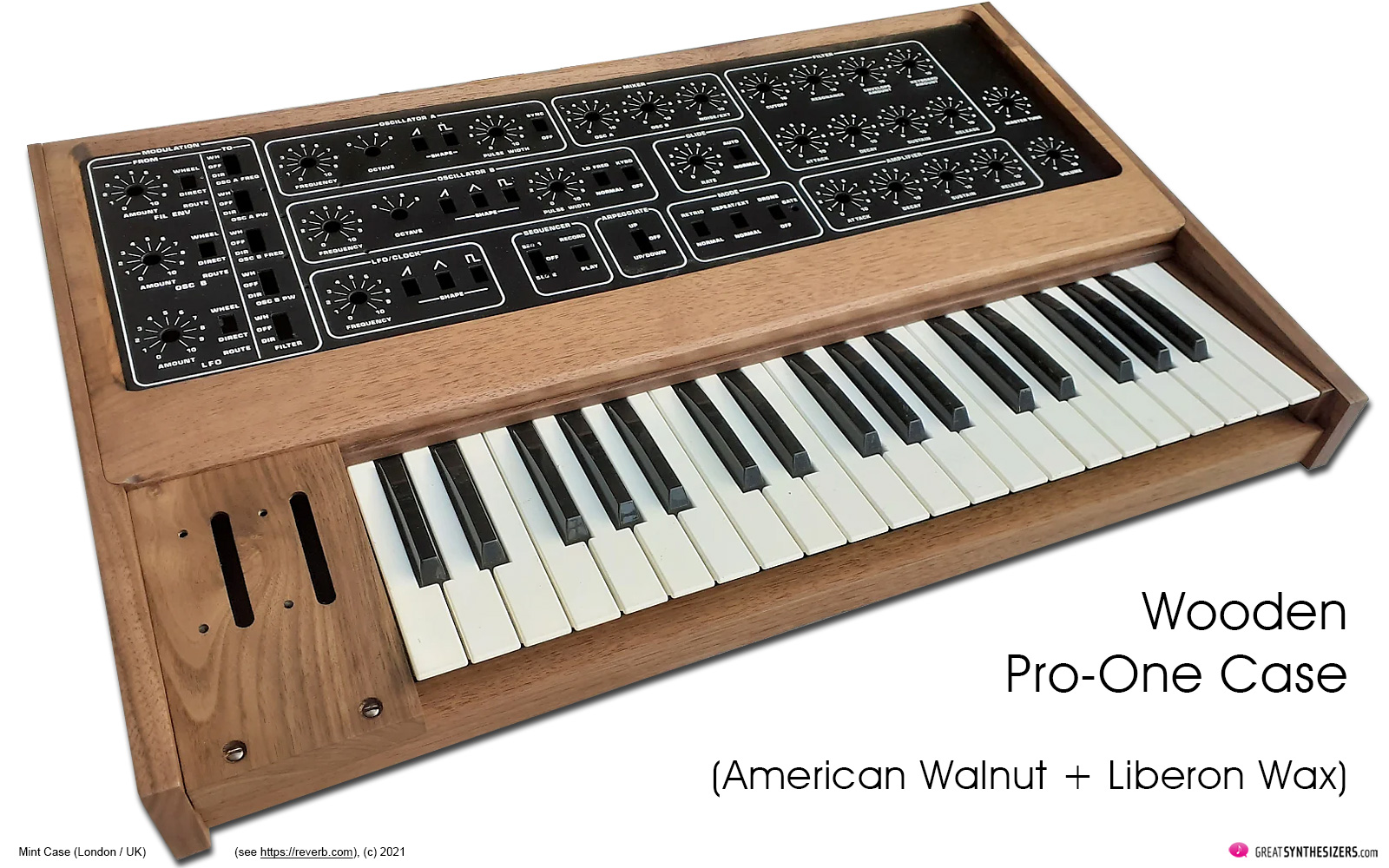
Part 2 and part 3 of the trilogy deal with upgrades of alternative wooden side panels, and with CPU / MIDI / keyboard / knob-caps modifications. The stabilization of potentiometers and rear sockets is also discussed in detail …
Continue with part 2 …
Sequential Pro-One –
modifications and upgrades (part 1)
Pitchbend / ModWheel Upgrade
Synthwood Upgrade
Links:
Sequential Pro-One – modifications and upgrades (part 1)
Sequential Pro-One – modifications and upgrades (part 2)
Sequential Pro-One – modifications and upgrades (part 3)
